Petaluma History Blog
Ice Cream
Posted on December 30, 2022
A quick trip to Petaluma Market changed everything. I was there for only one item: Clover Sweet Cream Vanilla Ice Cream. A walk amongst the many ice cream options however, brought up only one Clover flavor; and it was not vanilla. Upon inquiring, market management shook their heads and remarked that there was going to be no more Clover ice cream. I was aghast. I was horrified; but mostly I was sad. A quick call from home later that afternoon to the company netted only a voicemail, so I left my inquiry with them. After dinner that evening, I bemoaned the possibility – probability! – that this was indeed my last bowl of Clover ice cream.

Introduced in the May 19, 1966 Argus-Courier, this “refreshing OLD TIME flavor” came to the market after a long time and with ‘more than a little doing’. Delighting customers with the new easy to use ziptop opening and eight flavors, Clover was sure to have a winner.


July 27, 1966
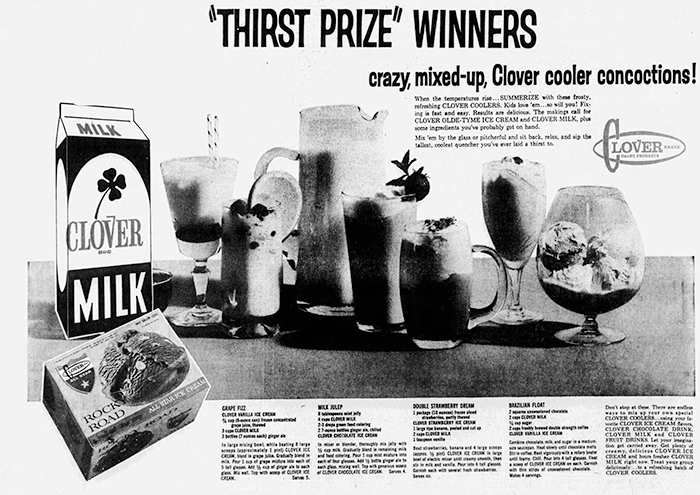
One way to encourage our ice cream habit is to provide recipes. Published on August 24, 1966, this list of recipes were sure to brighten up a hot August afternoon:
Double Strawberry Dream
Mix together: 1 package frozen strawberries, slightly thawed
Mix together: 4 scoops Clover vanilla ice cream
Mix together: 1 cut up ripe banana
Add: 2 cups Clover milk and 1 tsp vanilla
Mix thoroughly
Enjoy!
1967 brought even more new improvements to the packaging with the introduction of a modern new look:
On February 19, 1971, a new “old-fashioned” style flavor appeared. Called “country style” this recipe was “just like “Grandmoo used to make.”

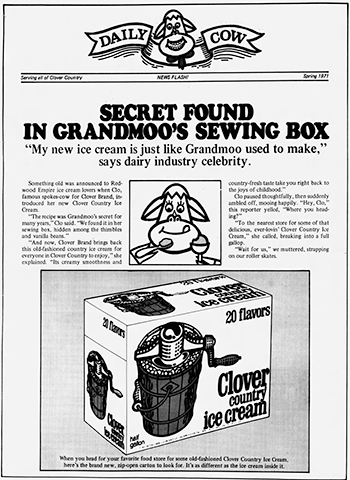
But news about Clover ice cream wasn’t only about changes in recipe or appearance. Clover ice cream became a part of our lives. Most of us remember the ice cream booth appearing at the county fair, parades, and other local events handing out mini ice cream cones.
On July 22, 1966, this article entices fairgoers to be sure to get their free sample of this new confection:


April 18, 2001
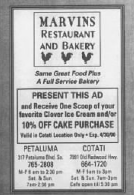
April 12, 2000

August 5, 1987
And because Clover is Clover… and they know how to have fun –in 2015 they introduced new flavors right in step with Petaluma happenings. “Petaluma Pothole”… an “ode to Rocky Road”… which might just as easily been an ode to Petaluma’s “rocky roads”.
A few days later.... confirmed . Don Frances of the Argus Courier, via Petaluma 360 on December 13, 2022. Posted this headline:
And while we know that there are many other tasty contenders out there, we will indeed, miss Clover Ice Cream and all that came with it.
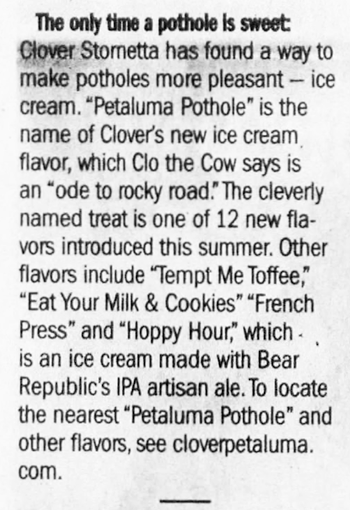
Connie Williams
Petaluma History Room
Librarian
Petaluma’s Legendary Bill Soberanes
Posted on January 07, 2022
Bill Soberanes was probably Petaluma’s most legendary character, known far and wide for his rapid-fire speech and quixotic mannerisms. His daily columns were legendary; filled with rambling thoughts highlighting local events from the famous to the mundane, with more than a splash of quirky. This year we mark his 100-year anniversary, and several historians, colleagues and admirers have stepped up to remember. Chris Samson highlights the mysterious way that Bill was able to insert himself into just about any event of the day. Fearless, full of bravado, it seemed Bill knew everyone and there was always someone who liked him well enough to bend a rule or two to give him access to the famous, or infamous, to get a picture with them. https://www.petaluma360.com/article/news/how-did-former-petaluma-argus-courier-columnist-collect-45000-photos-and/
John Sheehy has many personal remembrances of Bill throughout his childhood. John’s story looks at those remembrances through his historian lens to show Bill as the eccentric, thoroughly human person he was. https://petalumahistorian.com/the-making-of-bill-soberanes-as-mr-petaluma/
Dianne Reber Hart gathered 13 fun facts for an overview of the impact Bill had on his friends, family and town: https://www.petaluma360.com/article/news/13-fun-facts-about-former-petaluma-argus-courier-celebrity-columnist-bill-s/?ref=related.
Harlan Osborne, in his “Toolin’ Around Town” column notes his first remembrance of Bill is through his 2nd grade teacher: Miss Soberanes, Bill’s sister. He continues his recollection noting the many activities Bill brought to Petaluma, and how he, as an Argus Courier contributor, was honored to be able to interview the many participants in the wrist wrestling contests through the years: https://www.petaluma360.com/article/entertainment/toolin-around-town-reflecting-on-former-petaluma-argus-courier-columnist/.
Katie Watts, a former reporter and editor for the Argus-Courier, Marin IJ and Press Democrat reminds us that “Did you read Bill today” was a common start to many Petaluma conversations: https://www.petaluma360.com/article/news/who-was-bill-soberanes-and-why-did-he-mean-so-much-to-petaluma/.
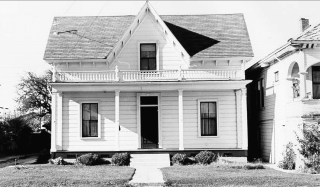
The Sonoma County Library holds many images from Bill’s life including his birthplace on East Washington Street. Later, when he moved next door, he was often spotted by those driving or walking by, typing on the front porch, waving to or chatting with friends. As John tells it, Bill stopped driving after an automobile crash in his 20s. From then on, he walked. One could always spot him, pipe in mouth, bag slung across his shoulder heading, well, just about anywhere.
How much less enjoyable Petaluma would be without Bill’s ability to include everyone “out there in Readerland” as an important part of the city, engaging our imaginations and creating or promoting long-lasting (and a few world-wide) events such as:
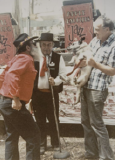
Old Adobe Fiesta and the World’s Ugliest Dog contest, Sonoma County photo #042296
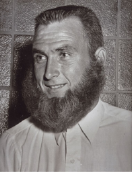
Whiskerino contest, Sonoma County photo #041668
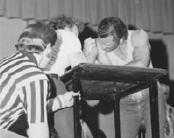
World-famous wristwrestling contest, Sonoma County photo #009313
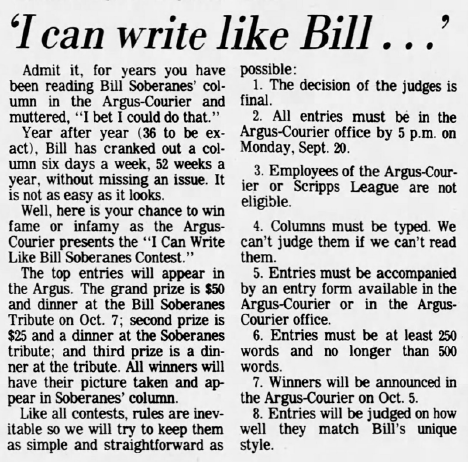
The Sonoma County Library newspapers.com August 17, 1988
Bill’s unique writing style sparked a lively contest: “I can write like Bill Soberanes.” Launched on Aug. 17, 1988 in the Argus, readers were invited to send in a column in the style of Bill Soberanes.

Charles Beavers

Ed Bridant
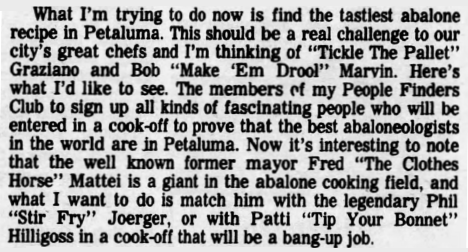
Mahtee Olmsted
Three winners were chosen.
Here’s an example from each:
To read the complete story use the library’s newspapers.com; type in “write like Bill” in the subject bar then filter by: Petaluma, CA, October 14, 1988.
And finally… take some time to sit in with Jim Agius, Katie Watts, John Sheehy, Chris Samson, Chris Linnell, Harlan Osborne and Tom Gaffey as they gather to remember the Bill Soberanes they all knew.
This video is now a part of the Sonoma County Library Digital Collections. Find it: https://digital.sonomalibrary.org/Documents/Detail/a-celebration-of-bill-soberanes-on-his-100th-birthday/503246
Enjoy!
Connie Williams
Petaluma History Room Librarian
Modeling History
Posted on August 03, 2021
There is a new exhibit in the Petaluma Library. Artist and model maker Chris Wall created a myriad of delightful models of Petaluma history.
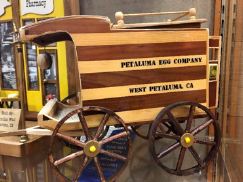
Using recycled materials where he can, Chris builds his models with information from books, images from the Sonoma County Library and the Petaluma Historical library and Museum, and visiting various Petaluma locations.
Chris previously worked at Petaluma High where he taught in the construction classes. He’s worked with lumber all his life, starting in a shipyard. He developed his interest in the history of the Old West by traveling highway 49 and exploring the rich history of our California ghost towns. This interest, a talent for working with wood, and some down time created the time to start with his first piece.

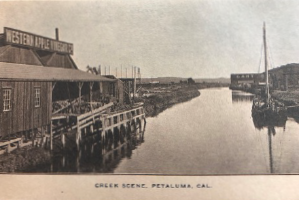
Scene of the Western Apple Vinegar Co. on the Petaluma Creek
Photo 2851 Sonoma Co Library / display photo: Petaluma Historical Library and Museum.
Petaluma is rich with history that translates well into images and these models engage our imagination by bringing them into that next dimension. Come on by and take a look!
Using recycled materials where he can, Chris builds his models with information from books, images from the Sonoma County Library and the Petaluma Historical library and Museum, and visiting various Petaluma locations.
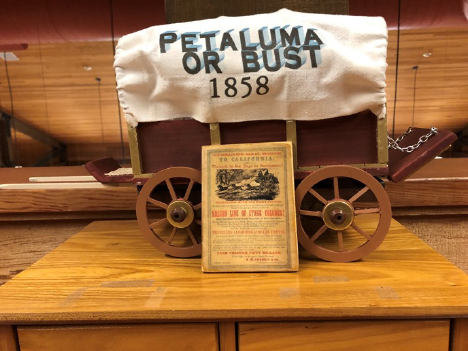
He enjoys making them right down to the tiniest detail. Some projects are completed quickly but others take longer as he digs deeper into the history; searching for those tiny details that make all the difference.
These models are on display until the early fall where they, and some other pieces will go to the Historical Library and Museum (20 4th Street) for display. Some of these pieces will be for sale at the Museum.
Finding Ray Mathews
Posted on March 16, 2021
Guest Interview
One of the best parts of working as the History Room Librarian at the library is being a part of the larger community of historians. Included in this community are those who have lived here a long time and have memories of growing up in, or just outside of town. I’m always reminded of journalist J.P. Hartley’s famous quote: “The past is a foreign country. They do things differently there” when I read or listen to these stories because sometimes it truly feels like we are visiting a different place.
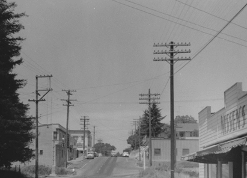
Penngrove Main Street, 1950s
(Sonoma County Library photo: 014923)
In 1951, Jack Withington was an 11 year old living in Penngrove, which at the time boasted a population of about 400.
“There was plenty to do for those of us who lived on the farms and ranches in and around the village,” Withington said, “but sports and similar activities were few and far between. When we did have free time, we jumped on our bicycles and headed for downtown Penngrove. One of our favorite pastimes was to stop at Vic’s Place located where the Penngrove Pub now stands, which offered a pool table, candy and scoops of all flavors of ice cream.”
Jack frequently noticed the many bowling trophies displayed on the wall behind the bar. Being an inquisitive boy, he asked the proprietor, Vic Mathews who operated the bar/poolroom with his wife Helen, if the trophies were his. “No, they are my son, Ray’s” Vic told him.
Despite his many visits to Vic’s Place, Jack never knew he had a son. Vic subsequently told him that his son Ray was a sailor in the U.S. Navy, and regaled him on later visits with stories of Ray’s adventures at sea around the world. Throughout his high school years, Vic’s Place became Jack’s “go-to place,” where he never tired of hearing about Ray.
Upon graduating from Petaluma High in 1958, Jack signed up for a four-year hitch in the Marine Corps as a way to see something of the larger world. It wasn’t until he was waiting for the bus with his family at the Greyhound bus station at 4th and C streets in Petaluma, that Jack realized that he was truly leaving his small town. As an unfamiliar bittersweet feeling came over him, Jack turned to his father and, in a very unaccustomed manner, gave him a big hug and a kiss.
“I was on way to boot camp on the southbound Greyhound bus to San Francisco,” Jack said, “then on to San Diego to the Marine Corps Recruit Training Base. Three days after arriving in boot camp, I was called in to the Quonset hut duty office and was told my dad had died.”
Jack immediately returned home to Penngrove, where he buried his father, before returning to camp.
“After boot camp, I was assigned to duty as a ‘grunt.’ My job, among other duties, was to carry a Browning Automatic Rifle and get used to its workings. After almost two years of stateside duty, we were shipped to Okinawa, where we were called to many “hot spots” in South East Asia. Our transportation was usually a World War Two vintage attack transport, or APA, which some may remember from old war movies. We had to disembark at sea by climbing down cargo nets.”
After leaving Okinawa, the ship visited the port of Subic Bay in the Philippine Islands.
“I knew that the Philippines had been ceded to the U.S. by Spain at the conclusion of the Spanish- American War,” Jack said, “so I wasn’t too surprised to see when we landed that we were surrounded by other American vessels. The weather in Subic Bay was hot and muggy, definitely not weather we were accustomed to, but we soldiered on and completed our duties as assigned.”
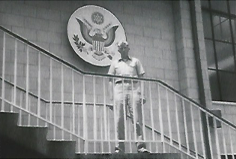
Jack - 1958
One day, Jack decided to walk around the area and explore its many offerings.
“As I was nearly always thirsty in this weather, I went into the nearest building, which turned out to be the base bowling alley. I bought a soft drink, and to pass the time, I watched the men bowling. I was immediately taken back in my mind to Vic’s Place. The men bowling were all Navy personnel with their names stenciled on the sides of their trousers. I spied a bowler with the name “Matthews” stenciled on the side of his. Could this be Ray Matthews, I wondered, from Penngrove? I walked over and asked, “Are you Vic Mathews’ son from Penngrove?”
“Yes,” the man said.
“And with that, I found myself face-to-face with Ray Mathews, the bowling champion whose adventures around the world I had grown up listening to, and which had inspired me to join the Marines, standing in a bowling alley nearly 7,000 miles from Penngrove.”
Keeping Current with History
Posted on January 05, 2021
“The past is a foreign country… they do things differently there”. L.P Hartley
While most of us are keeping our eyes on the new year, it’s always worth a look back to see just how far we’ve come. Last year began with hope and optimism for many on-site events and presentations, each requiring a shift to the technology that would work its best magic.
The Petaluma History Room collaborated with John Sheehy and the Petaluma Historical Library and Museum as well as the American Association of University Women to present two l look-backs at Petaluma history with women the link to them both. You can view these at the Library Youtube channel – they are well worth the visit.
Grab a cup of coffee or cocoa and sit back to enjoy:
https://www.youtube.com/playlist?list=PL2s5lYj17_WqAzOVdTZ4jZi7qGUxRsR76
Another enjoyable peek into the past is seeing how folks fared then; and gathering wisdom from their actions. I’ve put together a short slide timeline of Argus Courier articles on the use of masks during the 1918-1919 Flu pandemic. It began in 1918 as World War I was coming to a close. As the flu ramped up all over the world, mask restrictions were put in place, dances halted, and schools closed. Sound familiar? When the war ended; in November, things were looking up – it seemed that the flu was abating. But a second wave came with a power no one expected. Click here to see the timeline and how the Argus presented the situation 1918-Masks-in-Petaluma.pdf
And that… it’s time to look forward. Listening to the stories from the past is a good way to understand what’s happening today. Petaluma is blessed with historians who are willing to share their interest through blogs, newsletters and community organizations. Here are some you should know about and … Take a moment to visit their sites and read through the stories. You may find yourself walking through downtown and mentioning to your friends: “did you there was once a hotel on this site?”. You’ll never see this town in the same way again; you’ll see its rich history in every shop you visit. Enjoy!!
John Sheehy’s Blog: The Petaluma Historian: https://petalumahistorian.com
John grew up in here the heart of Petaluma. In his blog he shares colorful stories of interesting individuals and events across a wide-range of topics and eras. Who knew Petaluma was so rich with characters?!
Jeff Elliott’s Blog: Santa Rosa History: http://santarosahistory.com/wordpress/author/jeff-elliott/
Providing a wealth of stories about Sonoma County, Elliott brings a veteran journalist’s expertise to his writings and research. Check in often. There are hundreds of posts and you can jumpstart your own research.
Katherine Rinehart’s Blog: https://kjrinehart.com/blog/
Author of the book Petaluma: A History in Architecture, and former manager of the Sonoma County History and Genealogy Library and Sonoma County Archives, her blog includes stories behind many local buildings and landscapes. This exploring of events as they occurred offers us a unique perspective about things we may have wondered about the places we pass by every day.
The Sonoma County Library’s History and Genealogy Library Newsletter and Blog: https://sonomalibrary.org/locations/sonoma-county-history-and-genealogy-library
Written by H & G Library staff members, the newsletter includes top notch interviews, a look at library services and acquisitions, and in-depth stories about materials at the library.
The Petaluma Historical Library and Museum: https://www.petalumamuseum.com
While access to the newsletter is through membership, note the museum’s website. It provides online news of events and includes many virtual events that you can access.
Census
Posted on July 27, 2020
Given America’s bedrock belief in the right to privacy and individual freedoms, answering questions for the Census has always raised questions by some who are concerned that the government may be intruding too much into people’s lives.
Petaluma has been participating in census taking since 1850, the year California became a state. That first survey, a copy of which resides in the Petaluma History Room consists of twelve randomly numbered pages, and lists residents who came to Petaluma from all over the world, including England, Peru, Mexico, the Sandwich Islands, Switzerland, and a number of American states. Most of the occupations listed are farmer, laborer, clerk, or merchant.
The fifteen national censuses undertaken every decade since are critical to businesses, government, and other organizations that rely on census information for decision-making and community design. The Argus-Courier and its predecessors provide a wonderful view into the concerns and reasons for taking part in the census. In 1910, the Petaluma Argus encouraged everyone to participate and noting that: “there’s nothing in it for the Argus except that it takes pride in this city and in getting all that is coming in population as well as in other matters.”
Concern that everyone be counted prompted the Argus-Courier to continue to encourage participation by inviting readers who might not know where or how to get counted to contact the paper; which would connect them to the proper folks.

May 13, 1910
Why did they think it was important to be counted? Because in December of 1910, after the count came in, California was awarded four new seats in the U.S. Congress. More congressional seats equaled more political power for a growing state, made possible thanks to the census.

Dec 2, 1910
The newspaper also offered this advice: “Don’t be suspicious or ‘cagey’ in your answers. Give the facts, even if they seem personal. They will be held in confidence and not used against you.”
Questions about the kinds of questions included in the census are as old as the census itself.
“It’s getting to the point,” the Argus-Courier reported a senator from Pennsylvania saying in 1940, “where a housewife will have to account for her pots and pans and a man will have to take inventory of his tackle.” That same year, President Franklin Roosevelt went out of his way to reassure citizens “there need be no fear that any disclosure will be made regarding any individual person or his affairs.”
There is always the issue of the census takers. Petaluma’s 1850 census contains a footnote that states: “The 1850 census-taker was an extremely inaccurate man who took no time to get the correct spelling of names and his handwriting in many instances is illegible.”
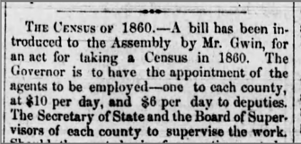
Sonoma County Journal
Jan 27, 1860
Two issues in attracting census takers since the beginning have been money and proper aptitude. In 1860, census takers earned a lucrative $10 a day, or roughly $290 in today’s currency (approximagely $34 per hour for an eight-hour day).
To be more selective in hiring local census takers, in 1940, a test was administered for 150 aspiring census takers, of which 55 were ultimately chosen.
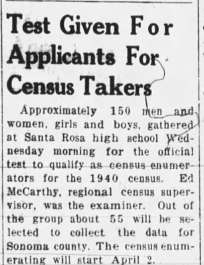
Sonoma County Journal
Jan 27, 1860
Likewise, in 1980, prospective census workers in Petaluma needed to pass a test for positions that started at an hourly rate of $3.50, or $11 in today’s currency:
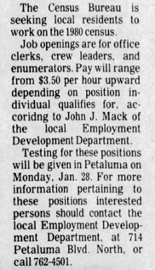
In the 1930s, when Petaluma was still largely rural, the Argus-Courier encouraged everyone who lived on a farm to remember the census taker might be frightened away by barking dogs. “When the census taker calls,” the editor recommended, “tie your dog and greet your visitor with a smile. He is just a hard working emissary of Uncle Sam. And a human being to boot.”
It also offered some advice for census takers who turned up during supper time:
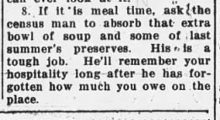
March15, 1930
While most of the data captured and used in a census pertain to issues of the day, for historians, genealogists, and others interested in finding information on their family roots, information collected in census records is critical. This year’s census, like those before it, will help future generations in understanding our lives today.
On that score, while it was not a part of the official U.S. Census, during the 1930 census in Oakland, a proposed local ordinance outlawing the private ownership of chickens and other fowl led to the city conducting a “hen census.” I thought that their conclusion was pretty spot on:

Apr. 2, 1930
Welcome to the New Petaluma History Room Blog!
Posted on February 07, 2020
This is the first in a new monthly series of blog posts – please join in and comment with insights and experiences...and some family history if you have some! Each month we’ll pick a topic to consider and I’ll include some images found in the Sonoma County Library Special Collections, newspapers, books, and when possible some on-line links so that you can follow up and get the whole story.
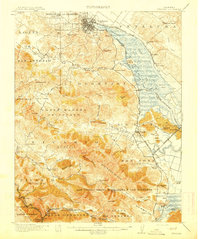
Reading the news of the day, especially as the election here in town unfolded, the topic of dredging came up as part of the election conversation. I thought it would be an interesting look into the history of dredging here in Petaluma and discovered that it’s been a topic not only of conversation, but of interest to a wide variety of people from the Petaluma’s very beginning.
As early as the 1860’s, the newspaper reported on the desire to dredge the river. In February of 1892 Charles Minturn, the owner of the Steamer Petaluma “has commenced the work of straightening the creek so as to establish a landing for his boat at, or near, the Italian garden, one mile below this city”. (Petaluma Argus, Tues Feb 11, 1862). The ability to travel from here to San Francisco was desirable not only economically for shipping goods, but for local citizens.

A brief history of the River in the September 25, 2015 Argus Courier
Around the late 1870’s new styles of dredging machines were invented and utilized on rivers across the country. They invited much speculation as to their possible use here. Finally in 1876, A bill was introduced, and passed in Congress to appropriate $25,000 for “the improvement of Petaluma Creek” (Petaluma Weekly Argus April 28, 1876). Work was accomplished, and the Steamers Gold and Petaluma among others plied their trade up and down the Creek.
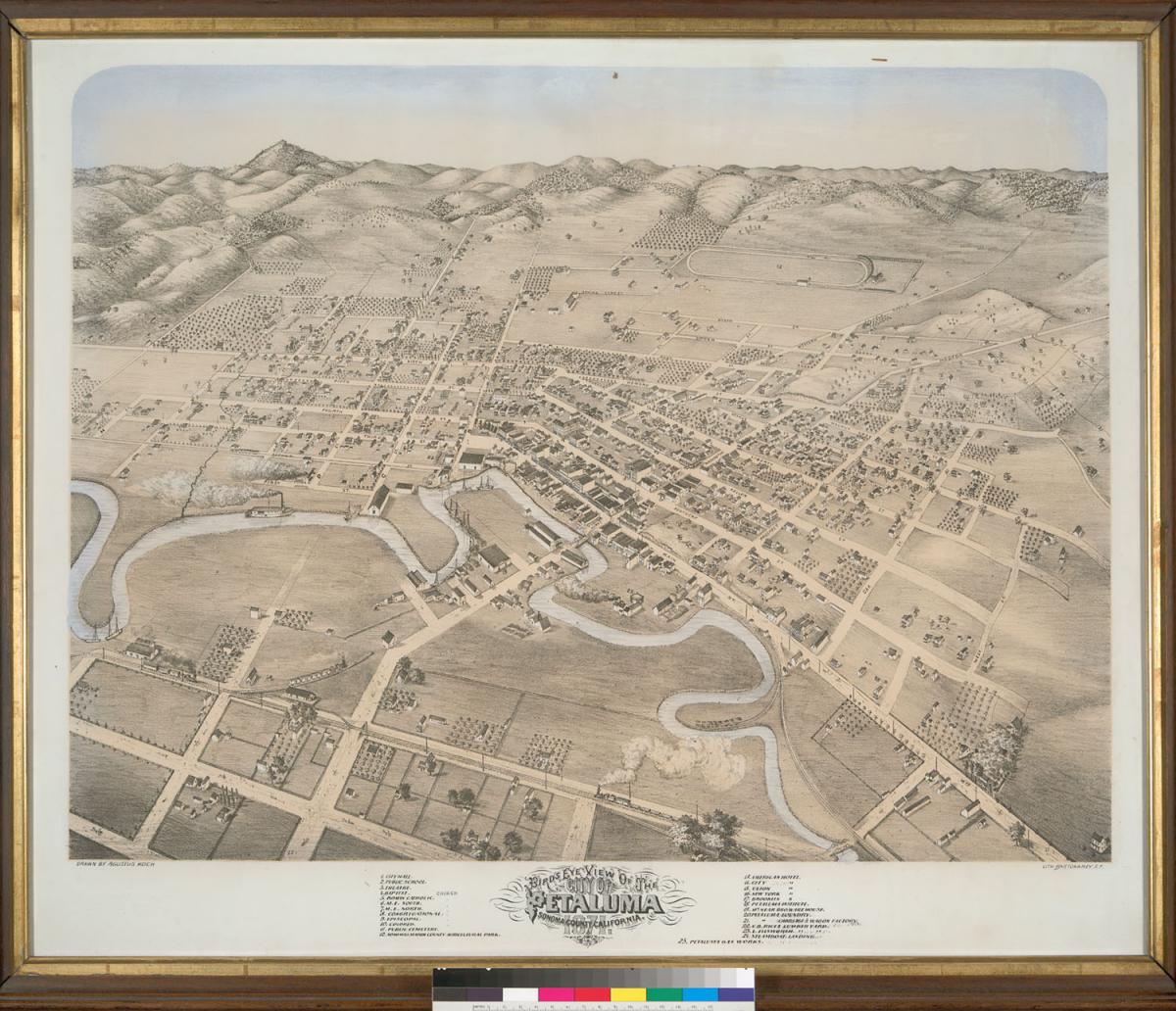
Through the years, the improvement of Petaluma Creek had its ups and downs with community desire and financing determining the ability to complete a regular dredging. It was in the late 1950’s that newly elected Congressman Clem Miller discovered that regulations in Washington determined whether a town could access the Army Corps of Engineers financing and assistance for dredging. Turns out – they’d dredge a river; but not a creek. This was a hurdle that Congressman Miller was determined to climb.
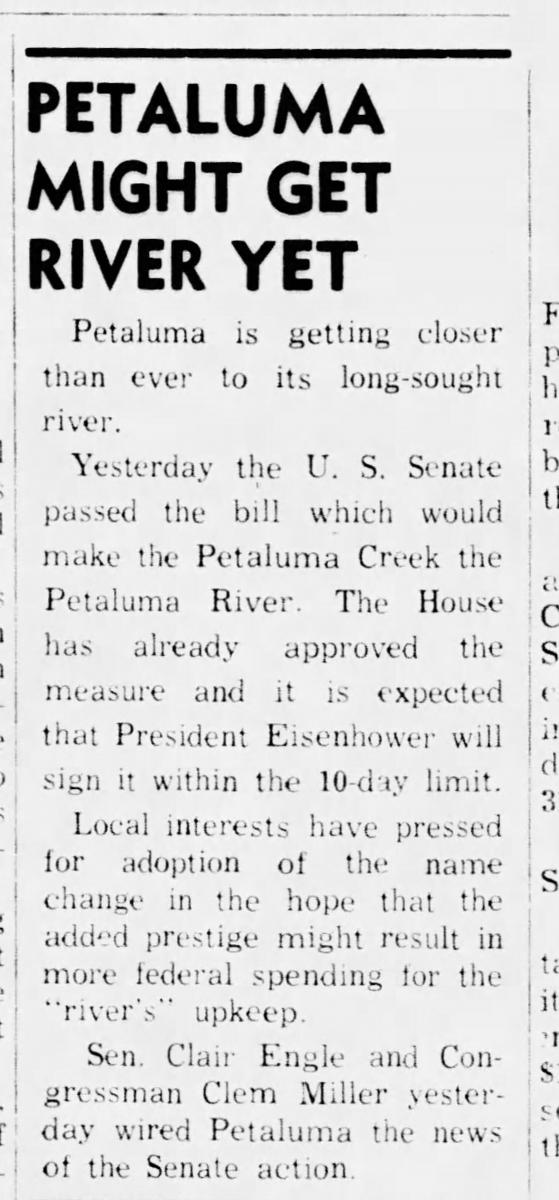
How Petaluma Creek became a River
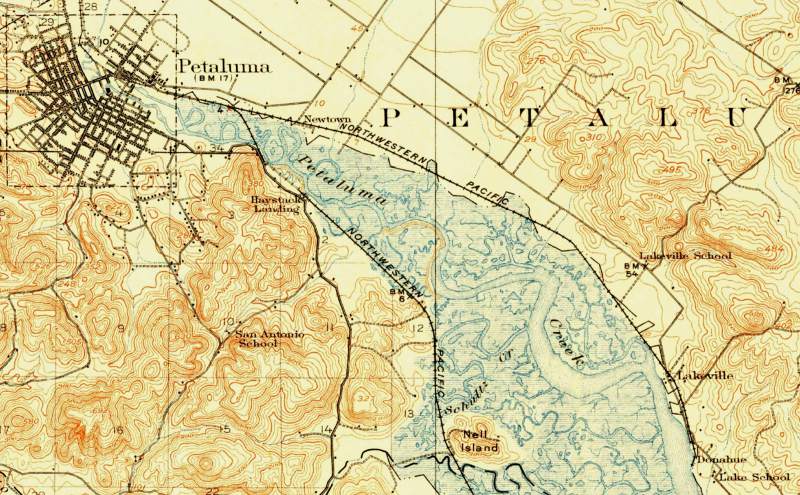
He introduced a bill that would establish the Petaluma Creek as officially: Petaluma River.
The process of moving a bill through Congress is sluggish at best, but after it passed in August of 1959, Petaluma is moved forward in the process towards getting a River. All it needed was the President’s signature.
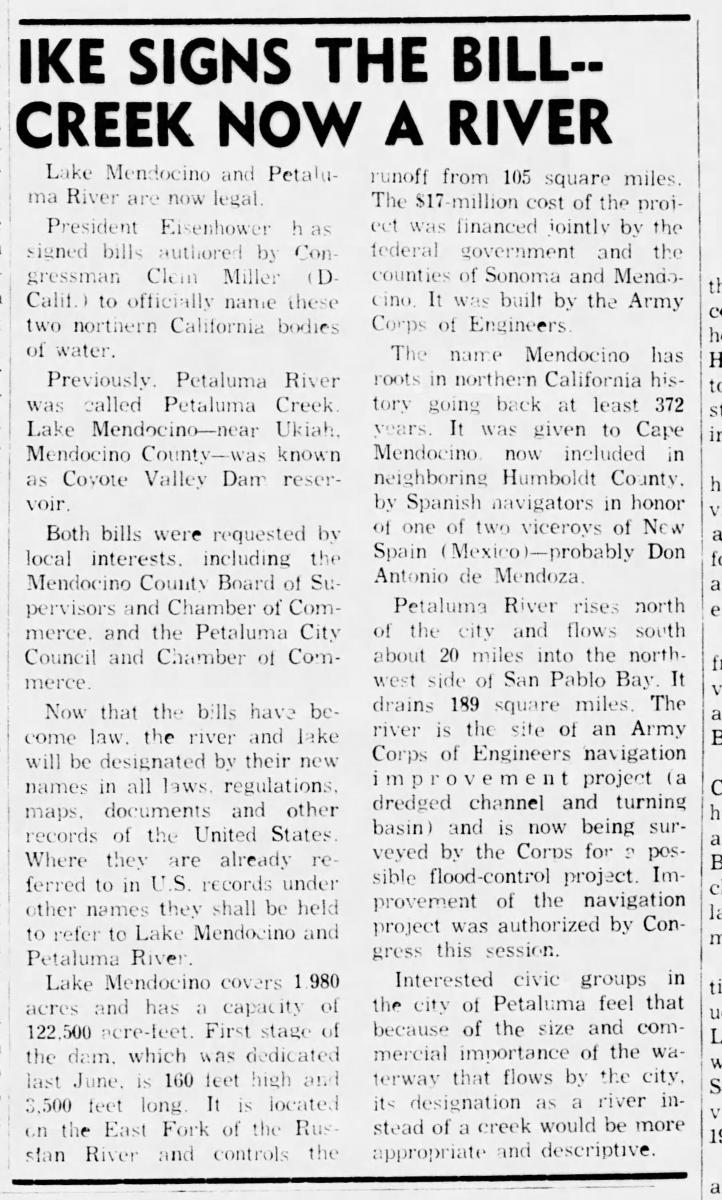
The Congressional Record shows no objection to the bill and it passed with little fanfare. The Record also shows a little back and forth conversation about the bill – with reference to the Army Corps of Engineers (did they not know the reason for the change? Maybe not!). Public las 86-193 was passed into law on August 25, 1959.
The Argus Courier, on August 29, 1959 celebrates the re-naming of the Petaluma Creek. It is now officially: Petaluma River.
The result of all this was a movement forward to the dredging of the River. This on-going improvement will be a part of Petaluma’s conversation for many years. Learn more about dredging and the focus being taken by the Petaluma City Council and Mayor Barrett’s “Dredge Pledge”
UPDATE: on February 2, 2020, Congressman Jared Huffman announced that the Army Corps of Engineers has allocated $9.7 million dollars towards dredging the river. Watch for more news as the process begins... and watch for wonderful results!
Clement Miller became best known for his work as the “Congressman who introduced the legislation advocating for the formation of the Point Reyes National Seashore, thus saving us from freeways and condos”. (Dave Cook Pt. Reyes Light, 8/31/2017)
Clem Miller died in a plane crash in 1962; and was the subject of the movie “Rebels with a Cause”
The Point Reyes Environmental Education Center is named for him.


